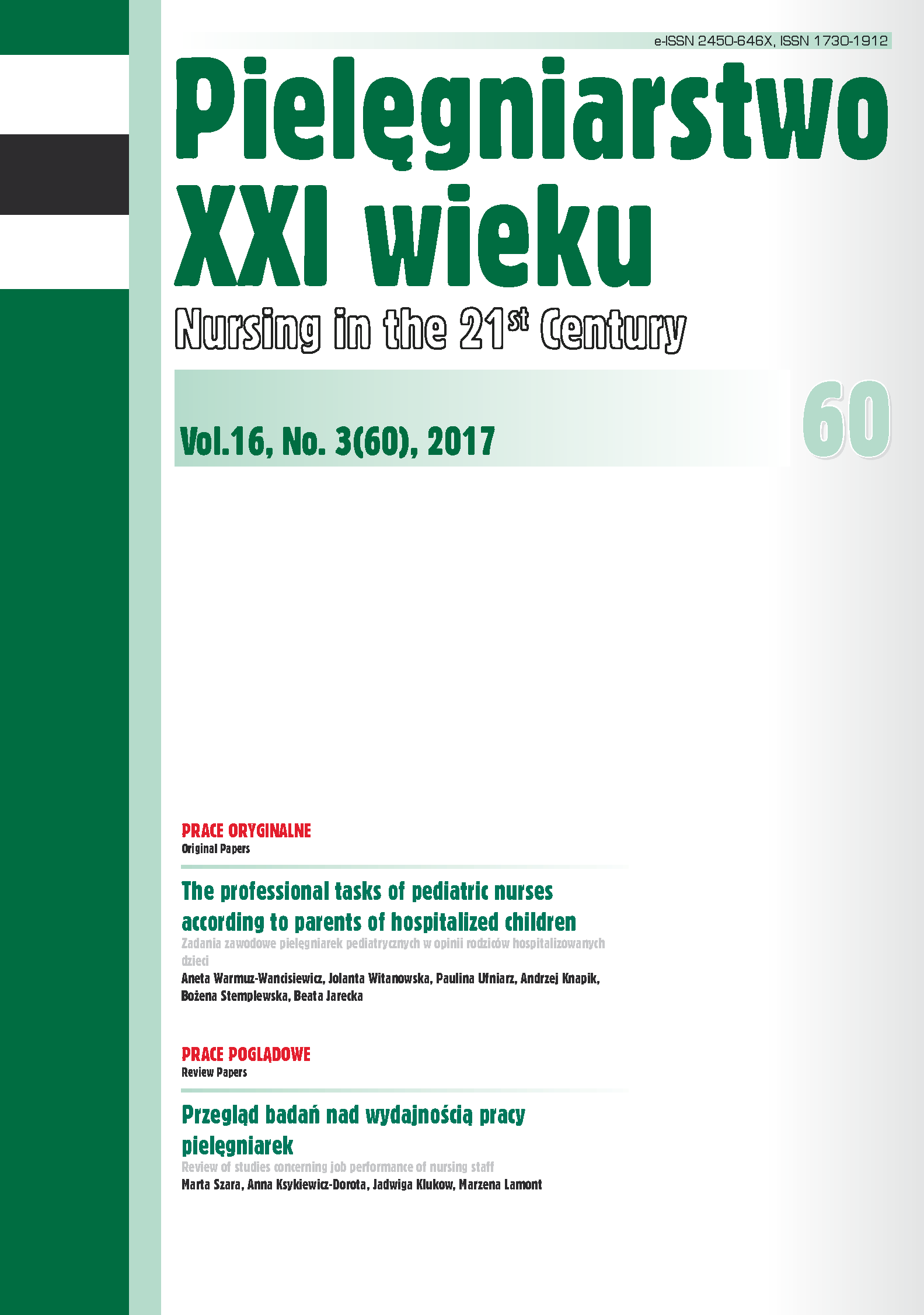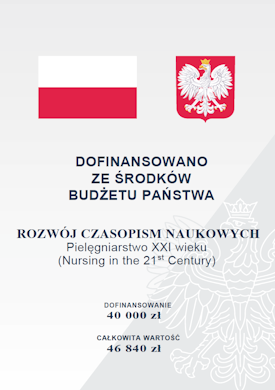The lactation process in primiparas in early postpartum period depending on the mode of delivery. The mode of delivery and the lactation process
DOI:
https://doi.org/10.1515/pielxxiw-2017-0026Keywords:
primipara, vaginal delivery, cesarean section, lactationAbstract
THE LACTATION PROCESS IN PRIMIPARAS IN EARLY POSTPARTUM PERIOD DEPENDING ON THE MODE OF DELIVERY. THE MODE OF DELIVERY AND THE LACTATION PROCESS
Aim. The aim of the study was to determine the relationship between the mode of delivery and the course of lactation in primiparas in early postpartum period.
Material and methods. The research was conducted amongst 200 primiparas including 100 after vaginal delivery and 100 after cesarean section. The study was conducted with the method of diagnostic survey with the author’s original questionnaire as a research tool.
Results. The women after vaginal delivery initiate breastfeeding earlier and more often find it successful (p < 0.001). Almost all the primiparas after cesarean delivery formula-fed their newborns (p < 0.001) and they started supplementary formula feeding earlier in comparison to women who had vaginal delivery (p < 0.001). Problem-free breastfeeding was declared by 15% of the respondents after vaginal delivery and 4% of those who had a cesarean section.
Conclusions. The mode of delivery influences the lactation process. The primiparas after cesarean delivery had problems with breastfeeding more often than those after vaginal birth.
References
1. Nehring-Gugulska M, Sztyber B, Pietkiewicz A. Promocja karmienia piersią. [w:] Nehring-Gugulska M, Żukowska-Rubik M, Pietkiewicz A, red. Karmienie piersią w teorii i praktyce. Podręcznik dla doradców i konsultantów laktacyjnych oraz położnych, pielęgniarek i lekarzy. Kraków: Medycyna Praktyczna; 2017, s. 33-42.
2. Johnston M, Landers S, Noble L, et al. Breastfeeding and the use of humans milk. Pediatrics. 2012; 129(3): 827-841.
3. Zielińska MA, Sobczak A, Hamułka J. Breastfeeding knowledge and exclusive breastfeeding of infants in first six months of life. Rocz Panstw Zakl Hig. 2017; 68(1): 51-59.
4. Rozporządzenie Ministra Zdrowia z dnia 20 września 2012 r. w sprawie standardów postępowania medycznego przy udzielaniu świadczeń zdrowotnych z zakresu opieki okołoporodowej sprawowanej nad kobietą w okresie fizjologicznej ciąży, fizjologicznego porodu, połogu oraz opieki nad noworodkiem (DZ. U. z 2016 r. poz. 1132).
5. Macfarlane AJ, Blondel B, Mohangoo AD, et al. Wide differences in mode of delivery within Europe: risk-stratified analyses of aggregated routine data from the Euro-Peristat study. BJOG. 2016; 123: 559-568.
6. Tully KP, Ball HL. Maternal accounts of their breast-feeding intent and early challenges after caesarean childbirth. Midwifery. 2014 Jun;30(6): 712-719.
7. Prior E1, Santhakumaran S, Gale C, et al. Breastfeeding after cesarean delivery: a systematic review and meta-analysis of world literature. Am J Clin Nutr. 2012 May; 95(5): 1113-1135.
8. Mahmood I, Jamal M, Khan N. Effect of mother-infant early skin-to-skin contact on breastfeeding status: a randomized controlled trial. J Coll Physicians Surg Pak. 2011; 21(10): 601-605.
9. Hung KJ, Berg O. Early skin-to-skin after cesarean to improve breastfeeding. MCN Am J Matern Child Nurs. 2011; 36(5): 318-324.
10. Bączek G, Golubińska H, Dmoch-Gajzlerska E. Wybrane problemy okresu połogowego - rola położnej środowiskowo-rodzinnej. Medical review. 2012. 2: 200-212.
11. Józefów P, Przestrzelska M, Knihinicka-Mercik Z. Przebieg laktacji we wczesnym połogu u kobiet po porodzie siłami natury i przez cesarskie cięcie z uwzględnieniem rodności kobiety. Piel. Zdr. Publ. 2013; 3(2): 133-142.
Published
Issue
Section
License
Copyright (c) 2017 Authors

This work is licensed under a Creative Commons Attribution-NonCommercial-NoDerivatives 3.0 Unported License.




